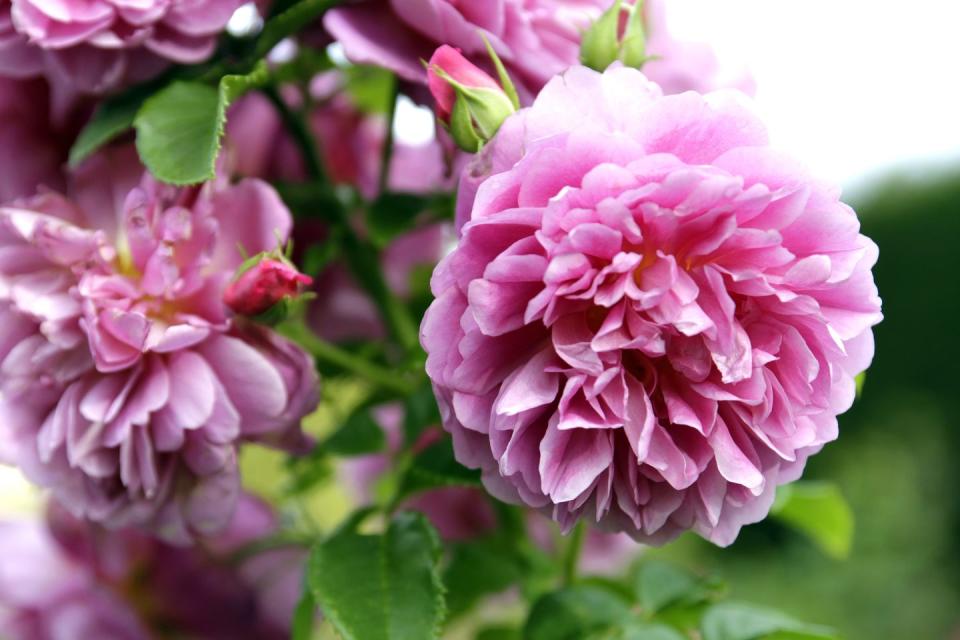The gardening trick that all the pros swear by

If you've ever bought a gorgeous new plant, then watched with dismay as it struggled to thrive in your garden, this clever trick is for you. Use the rule of 'right plant, right place' and you'll keep your plants happy without having to spend hours taking care of them.
What is 'right plant, right place'?
Professional garden designers swear by the concept of 'right plant, right place', and for good reason. It's a simple but hugely effective way to make sure you give your plants the best chance of doing well.
Every plant has a set of conditions that it likes to grow in. These are related to temperature, amount of light, soil type, amount of space, and exposure to things like extreme weather and pollution.
For example, some plants love to grow in full sun, while others are happiest in partial shade or full shade. Some need a particular type of soil, some enjoy damp conditions, and some like to grow in a more parched spot. Lots of plants need protection from very cold temperatures, but some are super-tough and can cope with frost, snow, strong winds, air pollution and even heat waves.
If you grow a plant in an environment that provides its preferred conditions, the plant stands a much better chance of thriving. Put simply, growing your plants in the right place is the most important thing you can do to keep them happy.

The opposite is also true: force your plant to grow in conditions that it doesn't like, and you automatically restrict how successful it can be.
The concept of 'right plant, right place' explains why you may have lost plants in the past, or have struggled to make a plant prosper. It's also a brilliant starting point for every new plant you introduce to the garden – and it works equally well for houseplants too.
Embrace the 'right plant, right place' approach and you'll benefit in a number of ways. For starters, your plants will be happier and healthier, so your garden will look great and be much more likely to stay that way as your plants grow and mature. You'll also save money because you won't need to replace plants on a regular basis. And by growing your plants in their ideal conditions, you can save time on plant care and maintenance too.
How to work out a plant's ideal conditions
If you're not sure what conditions a plant needs, there are a couple of easy ways to find out.

If you're checking out a plant at the garden centre, look for a care label. This will usually include a guide to the amount of direct sunlight the plant likes, how big it will grow, and whether it needs protection over winter (often referred to as being 'hardy' or 'tender'). If you're browsing plants online, the ideal growing conditions are usually included in the plant description.
If your plant doesn't have any care instructions, or is already in your garden, you can look it up online to find this information. Another good option is to use a plant identification app; these are particularly useful if you're not sure which plant you're dealing with as they often allow you to take a picture and cross-reference it with their plant library.
Once you know your plant's ideal conditions, you can work out the perfect place for it in your garden. Make sure you've got enough space in that location for another plant before you buy. And if your garden doesn't provide the right conditions for the plant, put it back on the shelf and move on!
This method also works the other way around. If you're looking for a plant to fill a specific gap in your garden, you can work out the conditions in that particular spot, then find a plant which is perfectly suited to them.
If you need to move a plant that you've already got in the garden to a more suitable location, it's worth identifying any other plants that are struggling before you finalise where everything is going. Getting things organised in one go is much better than putting your plants through the stress of moving more than once.
• A quick checklist for embracing ‘right plant, right place’
1. Work out the conditions that your garden can provide for plants. Think about the amount of sunlight, type of soil, moisture levels, and exposure to extreme temperatures or weather.
2. Only choose plants that are suited to growing in the conditions your garden provides.
3. Consider moving existing plants to a new location if they're not growing somewhere that provides their ideal conditions.
Stick to this simple approach used by all the pros, and you'll need less time and money to keep your garden looking good.
You Might Also Like


